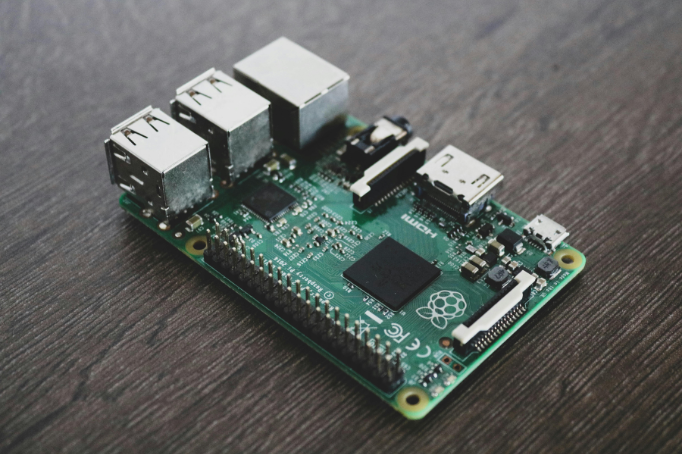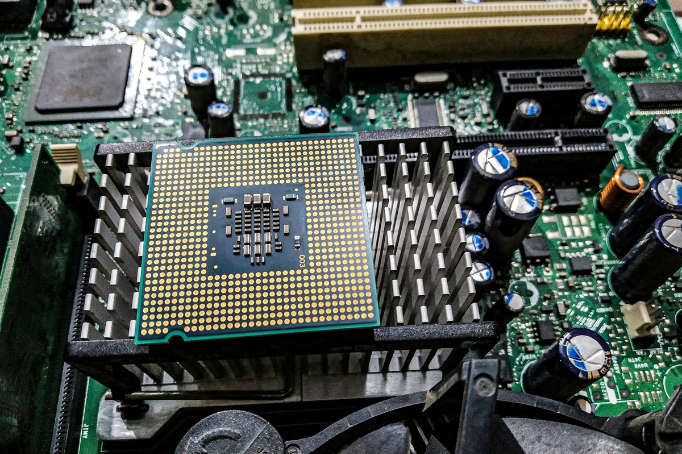The high speed of the business and data dependency have led to putting the ideas of efficiency and speed head-on in today’s business environment. Today, businesses continue to rely more and more on technology, not only to maintain day-to-day operations but to create value and grow through a competitive edge. Behind that technical infrastructure stand small yet so powerful components called memory chipsets. While nobody remembers these memory units, their impact on business technology is profound. Although memory chipsets are part of various upgrades to enable the process improvement and optimization of data in business, they are indeed fundamental to successful computation in complex business requirements.
This blog explains the core of memory chipsets in business technology, how their importance translates to competitiveness, and how advancements in memory technology have redefined competitive performance standards in today’s new world.

1. Understanding Memory Chipsets and Their Importance
The memory chipsets, commonly known as RAM, storage memory, or cache, are usually described as temporary storage spaces where the system may store data needed for fast access. Unlike permanent storage devices, such as hard drives or SSDs, memory chipsets, though volatile, retain their data only while the device is on. This temporary storage is very essential since it enables fast access, reduces the time needed to retrieve data, and increases system performance.
In business memory chipsets, companies rely on:
Reducing Load Times: This means that applications and files will load faster, which improves user experience and productivity.
Supporting Multitasking: More RAM enables the system to do various things at a go, a very crucial need for those businesses that have complex applications.
Ensuring Smooth Operation: Inadequate memory makes applications either hang or crash and stall workflow, reducing their efficiency.
2. Types of Memory Chipsets and Their Roles
Memory chipsets come in various forms, each with a unique role in optimizing business processes. Here are some key types and their roles in business tech:
a. DRAM (Dynamic Random-Access memory):
DRAM is the most common type of RAM used in both computers and servers, providing the temporary workspace that applications need to run smoothly without errors. Systems that run multiple applications or multiple processes necessarily require the need for DRAM: web servers, databases, and other large-scale data processing systems. It also supports virtualization: companies can run several operating systems on a single piece of hardware, reducing hardware costs and increasing the degree of flexibility.
b. SRAM (Static Random-Access Memory):
SRAM is faster and more stable than DRAM but costs more. SRAM is mainly used in cache memory. In cache memory, frequently accessed data is stored very close to the processor. It aids in accelerating data processing for applications used more frequently in business, giving a quicker execution of tasks and reducing waiting time.
c. Flash Memory
Flash memory is among the non-volatile memories, which is used in most of the SSDs. Unlike DRAM and SRAM, data isn’t lost when the system is powered down. Instead, flash memory gives persistence to all applications, such as when it’s used as portable storage within the system or device and in the centers for data stores. It could be ideal for business enterprises that require fast access to enormous amounts of data with no chance of losing data.
d. NVRAM (Non-Volatile Random-Access Memory)
Combining the persistence of flash memory with the speed of RAM ensures that data remains even in the loss of power. NVRAM is used in high-performance setups where both are essential, namely the speed and the persistence of the data. It is accepted widely to use it in servers or embedded systems for industrial automation.
3. How Memory chips Boost Business Efficiency
With the tons of data businesses have to go through today, memory chipsets form a very important block for efficiency increase. So, let’s look at some ways in which memory chipsets contribute to business performance:
a. Enabling Fast Data Access for Big Data Analytics
Finance, health care, and retail are sectors in which the amount of data is massive and needs to be analyzed in depth to achieve insightful decision-making. Memory chipsets facilitate real-time analytics through the availability of accessible, high-speed access to data; companies can make decisions based on data and trends available in real-time. With quick access to fast data, companies may minimize downtime; quicker adjustments in business also come about quickly. In addition to this, businesses stay ahead of the competition.
b. Enhancing Performance of Virtualized Environments
With virtualization, several operating systems or applications can share a physical machine and save costs as well as maximize their resources. However, this does require great amounts of memory to allow these environments to run well. Advanced memory chipsets scale virtual environments well, allowing businesses to serve more users or clients without dips in performance.
c. Supporting AI and Machine Learning Workloads
AI and machine learning are memory-intensive processes that use a lot of processing power; hence, companies need to have enough memory chipsets that can process within large datasets and speed up processes. For example, deep learning models require large memory for them to be stored and for processing data so that training will be done, hence ensuring that availing memory chipsets that are optimized for AI provides the companies with the ability to implement data-driven systems with the power of responding to changes in customer needs and machines that can automate routine tasks.
d. Facilitating Faster Customer Service Response Times
Many organizations today are utilizing cloud-based CRM systems and helpdesk software to process customers’ queries. Quicker server hosting memory enables quicker response to customers, leading to higher customer satisfaction owing to the satisfactory response time followed by resolutions of the client’s query.

4. Emerging Trends in Memory Technology for Businesses
As the demand for higher performance continues to grow, new advancements in memory technology are shaping the future of business tech. Here are some emerging trends:
a. DDR5 RAM
DDR5 is the newest memory technology. It will offer good speed and efficiency compared to its predecessors. The DDR5 RAM is more in terms of capacity and bandwidth. This means businesses can run applications that are data-intensive with low latency levels. This has especially proven to be helpful for companies that make use of AI, machine learning, and big data analytics.
b. HBM (High Bandwidth Memory)
One form of fast memory stacked vertically is high-speed memory HBM, which reduces the distance data has to travel due to physical shortcomings. It allows business users to run very powerful applications with graphics-intensity responsibilities—for video productions, game development, or design work. For scientific computing, high-speed memory is also extremely valuable since the processing of huge data files must take place as quickly as possible.
c. Persistent Memory
It bridges the gap between volatile and non-volatile memory, hence the name persistent memory. It combines the best of both worlds; for example, Optane memory from Intel merges speed with persistence: data can survive a power outage and remain accessible. Persistent memory is especially beneficial in data centers and enterprise-level applications that require consistent uptime and data availability.
d. Low Power Memory for Mobile and IoT Devices.
In this era of increased adoption of mobile and IoT devices, a call for low-power memory chipsets is rising in demand to ensure that these devices do not consume much power and allow performance to scale accordingly. This could mean devices can be enabled to run on a battery for longer periods, thus improving productivity among employees working offsite or remotely from their organizations with mobile devices.
5. Optimizing Memory Chipset Investment in Business Tech
Investing in the right memory chipsets can significantly improve a business’s operational efficiency and long-term scalability. Here are some strategies for businesses to optimize their investment:
a. Assessing Current and Future Needs
This understanding of memory requirements in the current applications will be a precedent for future needs. Taking the example of a business that plans to adopt AI or big data, should focus on investing in high-capacity memory chip sets that are of high speed and hence can handle large datasets.
b. Choosing Scalable Solutions
The businesses also select expandable or upgradable memory so that scaling out can be taken care of without undergoing major overhauls. Cloud-based solutions also have flexibility, such that the business will only utilize additional resources of memory when those resources are needed by the business.
c. Balancing Performance and Cost
High-end memory technology like DDR5 or persistent memory would be more performance-intensive than most other categories of memory technology. However, it would cost them much more money. Each business needs to analyze the value put into it against the budget to ensure they gain the performance without having it price them out.
d. Prioritizing Data Security and Reliability
Firms handling sensitive data will invest heavily in-memory solutions that do not let the data go away on the failure of the system or on power shutdown, like NVRAM.
Conclusion
While maybe not highly visible within business technology, memory chipsets play an important role in speed, efficiency, and general performance. More solutions, such as DDR5, HBM, and persistent memory, now allow businesses to access memory chipsets designed to meet the needs of modern applications. This way, an investment in the right memory technology optimizes a business’s present operations and enables businesses to be competitive and agile in this constantly evolving tech landscape.
About The Author
Elena Tang
Hi, I’m Elena Tang, founder of ESPCBA. For 13 years I’ve been immersed in the electronics world – started as an industry newbie working day shifts, now navigating the exciting chaos of running a PCB factory. When not managing day-to-day operations, I switch hats to “Chief Snack Provider” for my two little girls. Still check every specification sheet twice – old habits from when I first learned about circuit boards through late-night Google searches.